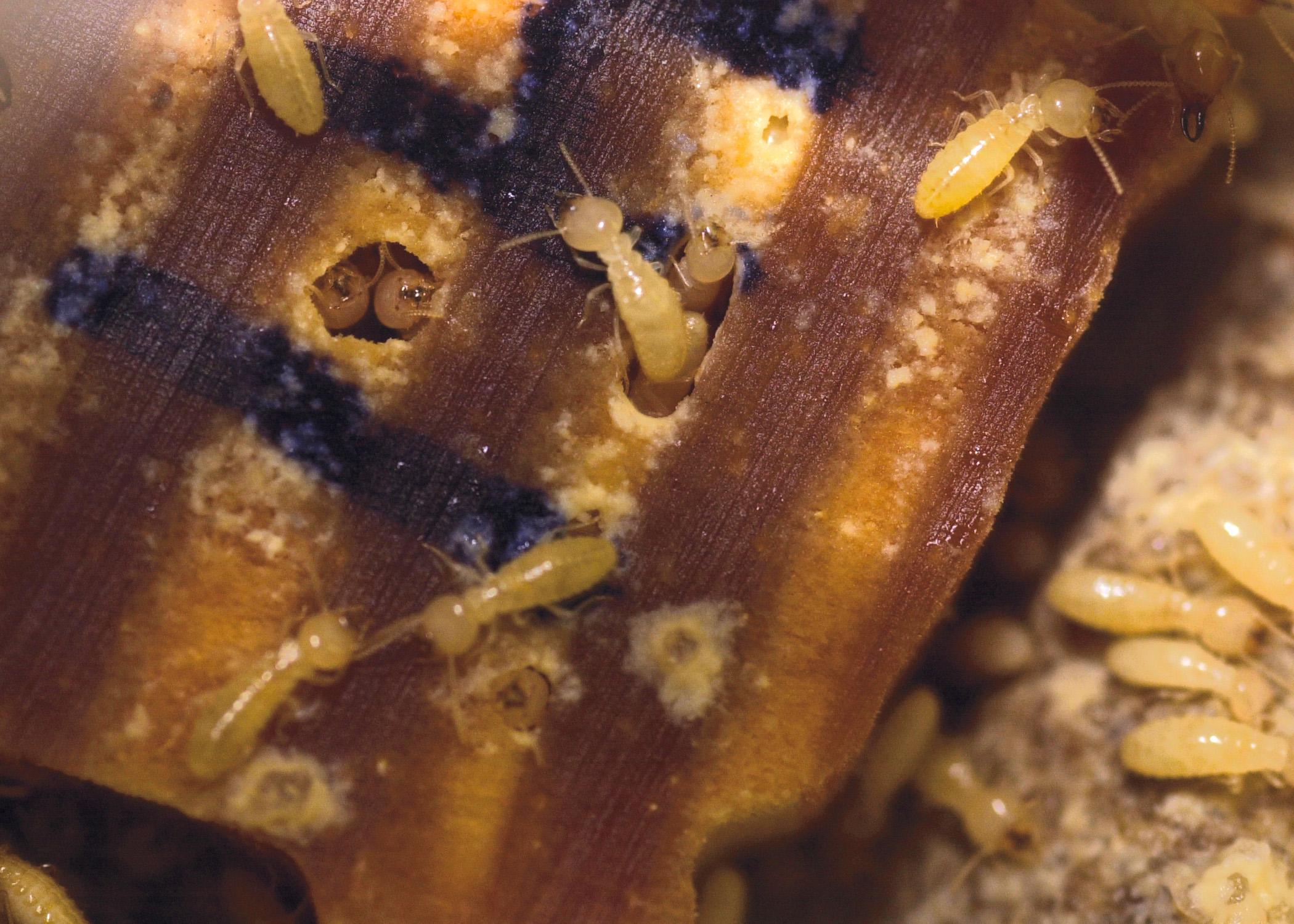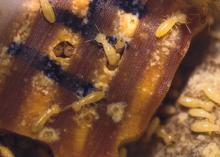Information Possibly Outdated
The information presented on this page was originally released on June 24, 2013. It may not be outdated, but please search our site for more current information. If you plan to quote or reference this information in a publication, please check with the Extension specialist or author before proceeding.
Proactive steps reduce risk of termite damage
JACKSON -- Seasonal termite swarms cause Blake Layton’s phone to ring off the hook this time of year.
Layton, a Mississippi State University Extension Service entomologist, said all three major termite species in Mississippi mate from January through June in hopes of forming a new colony. Mating season is one of the rare times people see the secretive insects. Sightings often spark suspicion of an infestation.
“Termites swarm every year during this time. It’s normal. It’s what termites are supposed to do,” said Layton, who is also an Extension professor in MSU’s Department of Biochemistry, Molecular Biology, Entomology and Plant Pathology. “Just because termites are swarming near a structure does not mean there are termites in the structure.”
That said, all Mississippians should take the threat of termites seriously. Eastern subterranean termites live all over the state and are the most common species. Southeastern drywood termites are the least common type and are found in the extreme southern counties of the state, mostly along US Highway 90. Formosan termites are an invasive species found in the southern half of the state.
“Every wooden structure in Mississippi is at risk of attack by termites,” Layton said. “For most homeowners, it is not a matter of if termites will enter their home, but when.”
Layton suggested homeowners throughout Mississippi keep a termite contract with a pest control company.
“By their nature, termites are very difficult to detect, and by the time homeowners see outward signs of an infestation, there could be thousands of dollars of damage,” he said.
Initial termite treatment costs and annual renewal fees depend on the size of the home and type of foundation. Treatment costs can range from approximately $800 to several thousand dollars. Annual renewal fees can range from about $80 to several hundred dollars, Layton said.
“Initially it can be expensive, but treating a home before there is an infestation is much less expensive than having to correct the damage a colony of termites could cause over a year or two,” he said.
Layton said contract terms vary depending on the company, and homeowners should read the contract carefully before signing it to make sure they understand the terms. Some companies cover termite damage done when the home is under contract, and others do not.
Formosan termites, which prefer warm, moist climates, pose additional risk to homeowners in the southern half of the state. Established colonies exist in 25 counties and continue to spread as far north as the Jackson area, Layton said.
Compared to Eastern subterranean termites, Formosan termites form larger colonies and are more aggressive feeders. Individual Formosan termites are also larger. All three factors allow them to consume more wood in less time than a colony of Eastern subterranean termites could.
Christian Stephenson, MSU Extension Service county coordinator in Hancock County, said his office receives several calls about termites each spring.
“A lot of our calls are from people who find dead termites inside their house,” he said. “Formosan termites swarm at night, and they are attracted to light. Sometimes they find their way inside. If people find 15 or 20 in their living room one morning, they think they must have an infestation. But that usually isn’t the case.”
Stephenson said although Formosan termites can do more damage in a shorter amount of time than the state’s native species, homeowners shouldn’t panic if they suspect an infestation.
“If the home is under contract with a pest control company, call them and have them do an inspection,” Stephenson said. “If the home is not under contract, it is okay to take a few weeks to get bids from several pest control companies and make the best decision for the individual situation.
“Professional monitoring and periodic treatments are extremely important,” Stephenson said. “But homeowners also need to take additional steps to reduce their risk of termites entering the home.”
These factors can increase the probability that termites will enter a structure:
• allowing soil, mulch, and leaves to get too high around the foundation;
• placing untreated wood products in close contact with the ground;
• disturbing the treated soil band around the home;
• allowing water to pool against the foundation; and
• piling wood or lumber against the structure.
Formosan termites arrived in New Orleans on cargo ships returning from East Asia after World War II. Mississippians first found them in 1984, and now Formosan termites inhabit more than 10 states.
For more information on termites, refer to Extension publication 2568, Protect Your House from Termites, or contact the county Extension office.


